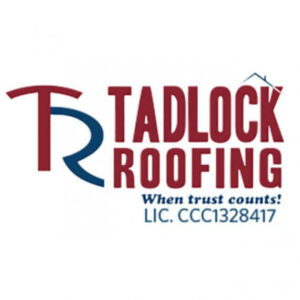If you are building a new home or replacing your old roof in Florida, you have a lot of decisions ahead of you. From the roofing materials to the color scheme, every single aspect matters and has a bearing on the final price as well as the longevity of your roof. One of the most important things you need to consider is the local climate. The weather in your city and region will determine the most appropriate roofing materials for your home.
The West Coast
The microclimate on the west coast of Florida varies greatly. It is, therefore, essential to understand the weather patterns in your local area and plan accordingly.
Tampa, for instance, is the 14th most hurricane-prone city in the whole country. If you live there, you can expect one every 2.03 years, with wind speeds of up to 137 mph. Therefore, despite the otherwise splendid weather year-round, homeowners in the Tampa area are best advised to invest in sturdy metal roofing to keep their homes and families safe.
Sarasota, on the other hand, despite being located just some 60 miles south of Tampa, is rarely hit by hurricanes. Thanks to Florida’s peculiar shape, the local area is spared the brunt of the powerful storms that ravage other parts of the coast. It still rains quite a lot there, though: the city gets 56 inches of rain per year — 20 more than the national average. That means that waterproof metal roofing is the best option for Sarasota residents too.
The East Coast
Hurricanes and tropical storms are frequent visitors to the East Coast too. For example, the Jacksonville metropolitan area experiences a hurricane once every 2.21 years. The latest one, the 2016 Hurricane Matthew, brought with it wind speeds of more than 80 mph. What’s more, the city of Jacksonville ranks as the 32nd most hurricane-prone city in the United States.
With this in mind, homeowners on the East Coast should dispense with the widely popular 3-Tab shingle roofing systems. Instead, they should opt for premium-quality architectural asphalt shingles, which can withhold wind speeds of up to 130 mph.
The Panhandle
The threat of hurricanes is typically less severe in the Panhandle than in other regions of Florida, but that does not mean you won’t get wet. Just take a look at the stats for Pensacola: with an average of 65 inches of rainfall and 56 rainy days per year, it holds the title of the second rainiest U.S. city. A couple hundred miles westward, Tallahassee ranks number nine among America’s rainiest cities. You also get some wind there — Hurricane Hermine in 2016 hit the Apalachee Bay Coast with wind speeds of more than 80 mph.
What does all that mean for homeowners in the area? Again, metal roofing is a must. It will both waterproof your home and protect it from wind damage. While asphalt and composite shingles have traditionally been the more popular option, they are porous and thus prone to mold and mildew growth.
Central Florida
The Central Florida region gets hot and sunny climate year-round. The city of Orlando is a typical example. It boasts an annual average of 233 sunny days and daily high temperatures of 83 F.
Such weather might be great for your vacation, but it does take quite a toll on your roof. Unfortunately, the more popular and affordable asphalt shingles tend to soften and curl up overtime under the constant heat. That reduces the lifespan of your roof by 20–40% and makes it susceptible to being blown off by wind. To extend the shelf life of your roof, choose light-colored shingles. These reflect the rays of the sun and reduce the heat over your roof.
To Conclude
Choosing the best materials for your roof is key for ensuring its longevity and your home’s safety. For expert and up-to-date advice, call us at 855.964.7663 or visit our website and ask for a free quote.










